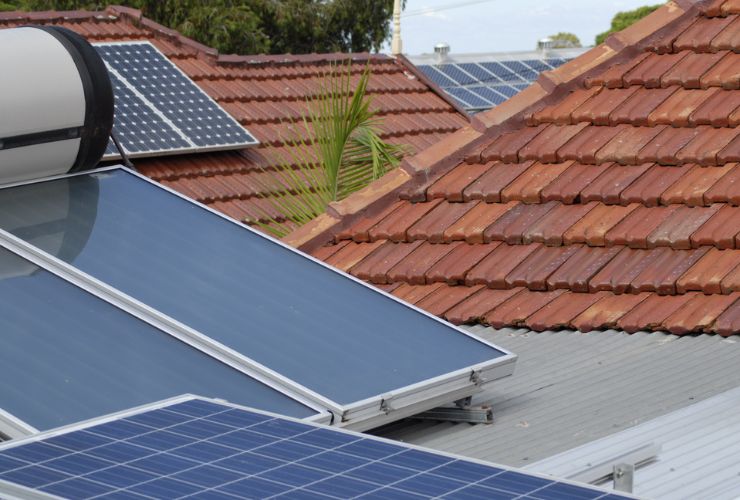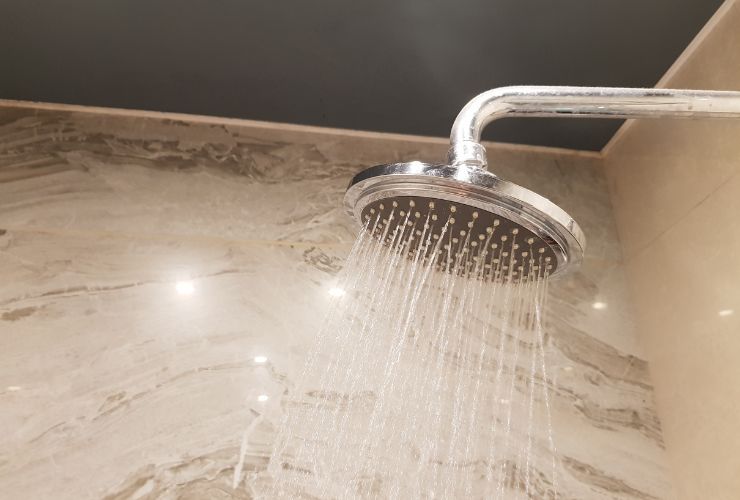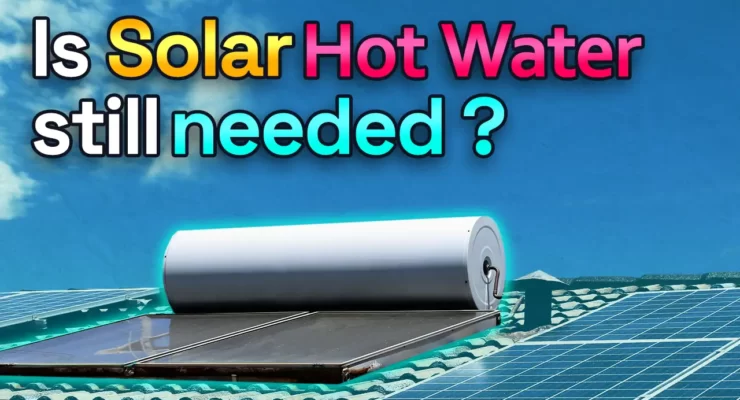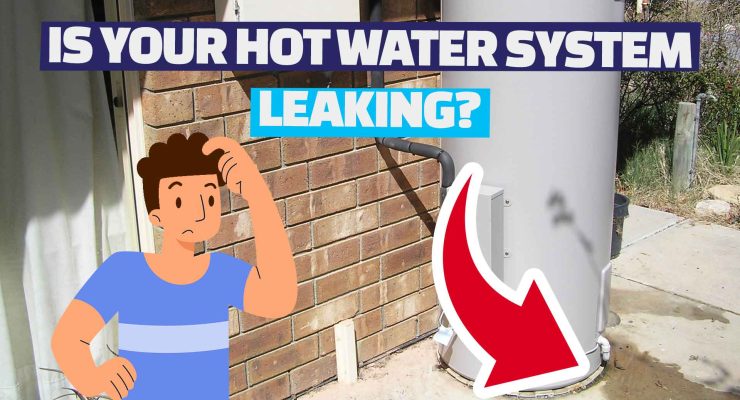Fast read
In Australia, homeowners can choose between a gas hot water system, a heat pump with a tank, replacing an existing electric HW tank or purchasing a solar hot water system. While solar hot water systems have over 65% efficiency and lower ongoing costs, their higher initial purchase costs and decreased government rebates challenge their ROI.
Valuable roof space and aesthetics are additional concerns. An example demonstrates that, over a decade, a solar hot water system might save only a marginal amount compared to a conventional electric hot water tank, especially after considering booster costs.
Long-term, the most beneficial approach, both environmentally and financially, maybe using surplus electricity from solar PV to power hot water generation. Heat pumps hot water systems and storage tanks are also becoming more and more popular.
What are the pros and cons of Solar hot water systems?
Let’s say you built a new home and you have to make a decision about which hot water system you want, then there are only four options in Australia. They are as hot water, instantaneous or via a tank, in some States still an electric hot water tank, a heat pump with a tank, and a solar hot water system. The choice largely depends on your locality, budget, and the environmental impact you aim to have. But what are the pros and cons of solar hot water systems?
If you have an existing home, then you can always still replace the standard electric hot water system with a new tank, but this option does not apply to new builds in many States. This is because some Australian States have stringent energy efficiency regulations that encourage or mandate the use of more energy-efficient water heating systems in new constructions.
Naturally, everyone would think a solar hot water system would be the clear financial and environmental winner because they will have lower running costs, as during sunny periods they do not use electricity to heat the water.
The pros of solar hot water systems
- With an efficiency of over 65%, meaning 65% of the energy hitting the solar thermal collectors is being transferred into the water, versus for example, a PV panel conversion efficiency of somewhere in the early 20%, Solar hot water wins hands down on efficiency. The stark contrast in efficiency levels underscores the potential of solar thermal technology in optimising energy usage for hot water systems.
- Also obviously ongoing running costs are another plus because they are much lower than gas or an electric tank, that runs on a thermostat and heats up every few hours.
- Environmentally lower electricity use also could mean less CO2 generation, if the original electricity comes from coal or gas-fired power station – so there are potential environmental benefits.
But what about the true ROI when the higher initial purchasing costs are taken into account?

The cons of solar hot water systems
- Every year until 2021, the Government decreased the rebate (STCs) for solar PV on the 31st of December while keeping the rebate for solar thermal consistent. However, from 2021 onward, the Federal Government chose to reduce the annual STCs for solar hot water as well. This reduction potentially diminishes the financial incentive for homeowners to opt for solar hot water systems.
- Roof space is becoming extremely valuable, with the emergence of solar electric PV as the dominant home renewable technology. Therefore the solar collectors take up valuable roof space, that could be occupied by electric solar panels. The competition for roof space highlights the burgeoning dilemma homeowners face in choosing between solar hot water and solar PV technologies.
- Visually, solar hot water systems can be ugly, especially the units with the tank on the roof. The solar hot water split systems are aesthetically slightly better, but a sleek, full black PV panel always looks better. Aesthetics can be a subjective matter but it does play a part in the decision-making process for some homeowners.
- The initial purchase cost of a solar hot water unit exceeds $4000, which challenges its perceived financial advantage. If you connect the system to a booster, it will increase the electricity costs, particularly during winter and on rainy/overcast days when the solar hot water collectors can’t produce enough hot water.
What about the Return on Investment (ROI)?
Sample 1: Existing home over 10 years
A replacement electric 315l tank will cost around $1800 to replace and around $550 per annum to run for a 3-4 person family. Therefore over 10 years to keep the family in hot water will be $7,300.
A solar hot water split system in a no-frost area will initially cost around $4,300 after rebates and maybe $5,000 in frost-prone areas. If one chooses a stainless steel electric tank, then such a system should have no issue lasting 10 or even 12 years.
If the system is NOT boosted the initial purchase cost is the only expense over 10 years. Therefore the 10-year total outlay of $4,300 for example is $2,500 less than the conventional electric hot water tank.

So what’s the verdict?
Nevertheless going with the non-boosted solar hot water means when we run out of hot water in a week of ongoing rain, hot water will be hard to come by, leaving you with cold water. The reality is that most solar hot water systems will have an electric booster. Now we have to add about $220 per annum to the overall cost, making the total for 10 years $6,500 compared to $7,300 for an electric tank system.
The biggest long-term advantage for environmental and financial benefits in regards to hot water is to utilise the export electricity from a solar PV system and channel it into the hot water generation via a heat pump and electric tank set up.



